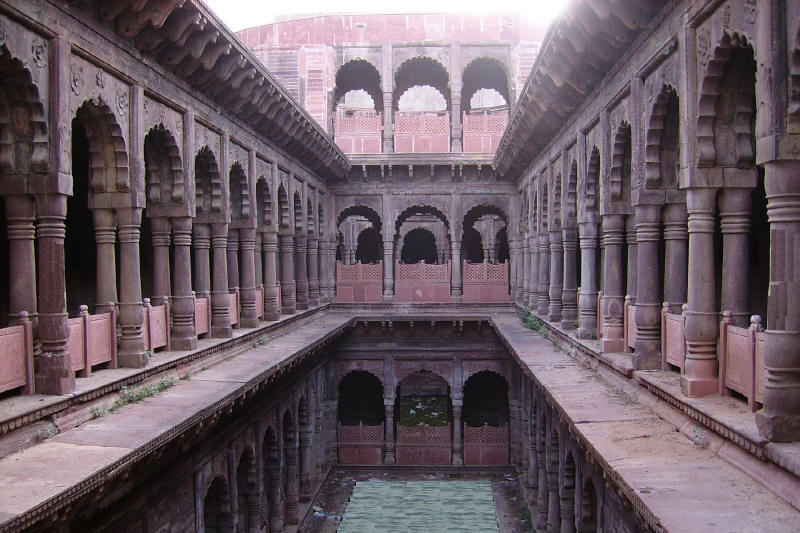Dholpur, Rajasthan, a state known for its majestic forts and regal palaces, is also home to hidden treasures that reveal its diverse culture and natural beauty. Dholpur, a lesser-known gem, is nestled in the eastern part of the state and offers a unique blend of historical heritage, natural wonders, and serene surroundings. In this article, we’ll embark on a journey through Dholpur, uncovering its top attractions, the best time to visit, local festivals, traditional Rajasthani cuisine, famous street foods, noteworthy restaurants, and comfortable accommodations.
“Experience the historical allure of Dholpur, a city steeped in heritage and natural beauty. Discover the grandeur of Dholpur Palace and the magnificent Shergarh Fort, both echoing tales of bygone eras. Delight in the scenic landscapes along the Chambal River, offering a tranquil escape. Immerse yourself in the vibrant culture, marked by exquisite stone carving traditions. Plan your visit to Dholpur for a perfect blend of history, architecture, and serene surroundings, making it a captivating destination in Rajasthan.”
Places to Visit in Dholpur:
- Dholpur Palace (Raj Niwas): A magnificent palace built in the Mughal and Rajput architectural styles, surrounded by lush gardens and a serene lake.
- Shergarh Fort: An ancient fort that holds historical significance and offers panoramic views of the city and the Chambal River.
- Talab Shahi: A historic reservoir built during the Mughal era, providing a tranquil spot for picnics and relaxation.
- National Chambal Sanctuary: Located on the banks of the Chambal River, this sanctuary is home to diverse wildlife, including the critically endangered gharial and other aquatic species.
- Machkund Temple: A revered Hindu temple located in a picturesque setting, with a sacred lake believed to have healing powers.
Best Time to Visit Dholpur:
The ideal time to explore Dholpur is during the winter season, from October to March. The weather is pleasant, with temperatures ranging from 10°C to 25°C, making it perfect for sightseeing and outdoor activities. Summers in Dholpur can be hot, with temperatures often exceeding 40°C, so it’s advisable to avoid visiting during this season.
Local Festivals in Dholpur:
- Ganesh Chaturthi: Celebrated with enthusiasm and devotion, this festival marks the birth of Lord Ganesha and involves colorful processions and cultural performances.
- Navratri: The nine-day festival dedicated to the goddess Durga is celebrated with dance, music, and religious ceremonies.
Traditional Rajasthani Dishes:
- Dal Baati Churma: A classic Rajasthani dish comprising baked wheat balls (baati) served with lentil curry (dal) and sweet crumbled wheat (churma).
- Ker Sangri: A unique desert dish made from dried berries and beans, typically served with roti.
- Gatte Ki Sabzi: Chickpea flour dumplings in a yogurt-based curry, a delightful vegetarian option.
Famous Street Foods:

- Kachori: Flaky pastries filled with spiced lentils or potatoes, commonly enjoyed as a quick and tasty snack.
- Mirchi Bada: Spicy green chilies coated in gram flour batter and deep-fried to perfection, a savory treat.
Famous Restaurants:
- Hotel Rajmahal: Known for its traditional Rajasthani and North Indian cuisine, offering a variety of dishes.
- Chawla Restaurant: A popular dining spot known for its local flavors and hospitality.
Good Hotels:
- Hotel Raj Niwas Palace: A heritage hotel offering modern amenities and a royal ambiance.
- Hotel Bari: A comfortable mid-range hotel known for its hospitality and convenient location.
In conclusion, Dholpur, Rajasthan, is a city that invites you to uncover its hidden treasures, from historic palaces to serene natural reserves. To make the most of your visit, plan your trip during the winter months when the weather is favorable for exploration. Explore the city’s historical sites, immerse yourself in its vibrant festivals, and savor the traditional Rajasthani dishes and street foods that reflect the region’s rich culinary heritage. Dholpur promises an unforgettable journey into the heart of Rajasthan’s unique culture and natural beauty.

